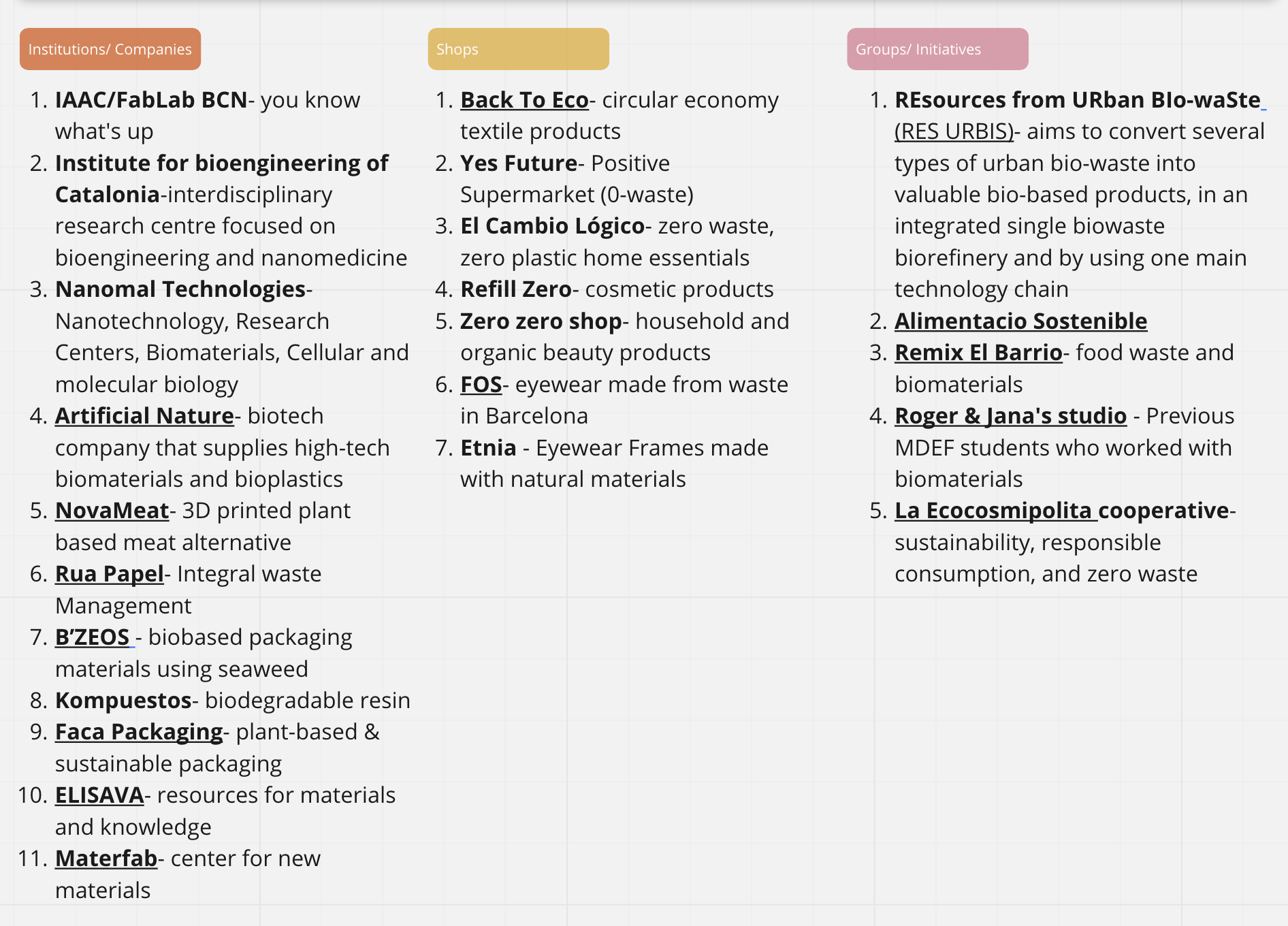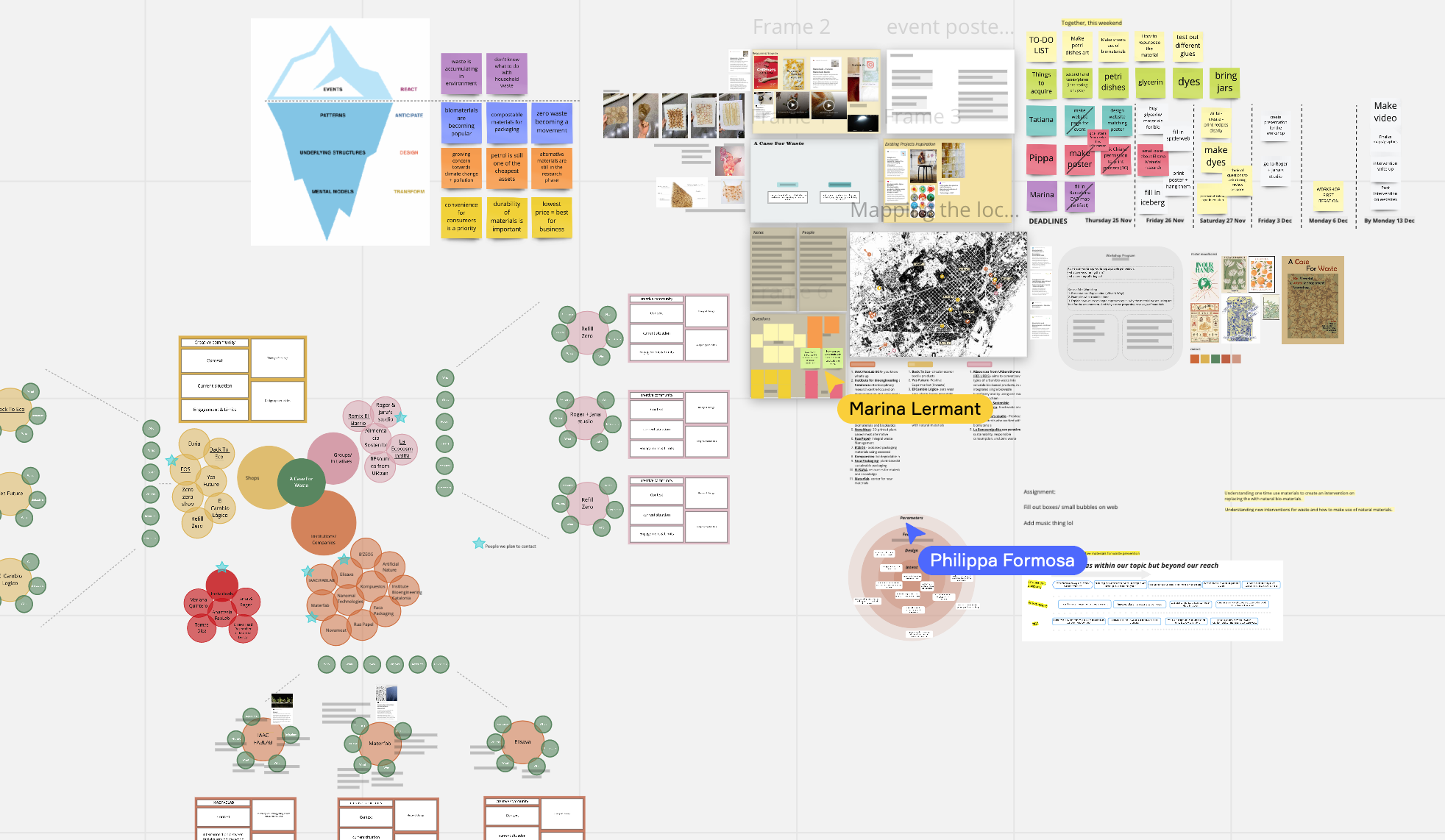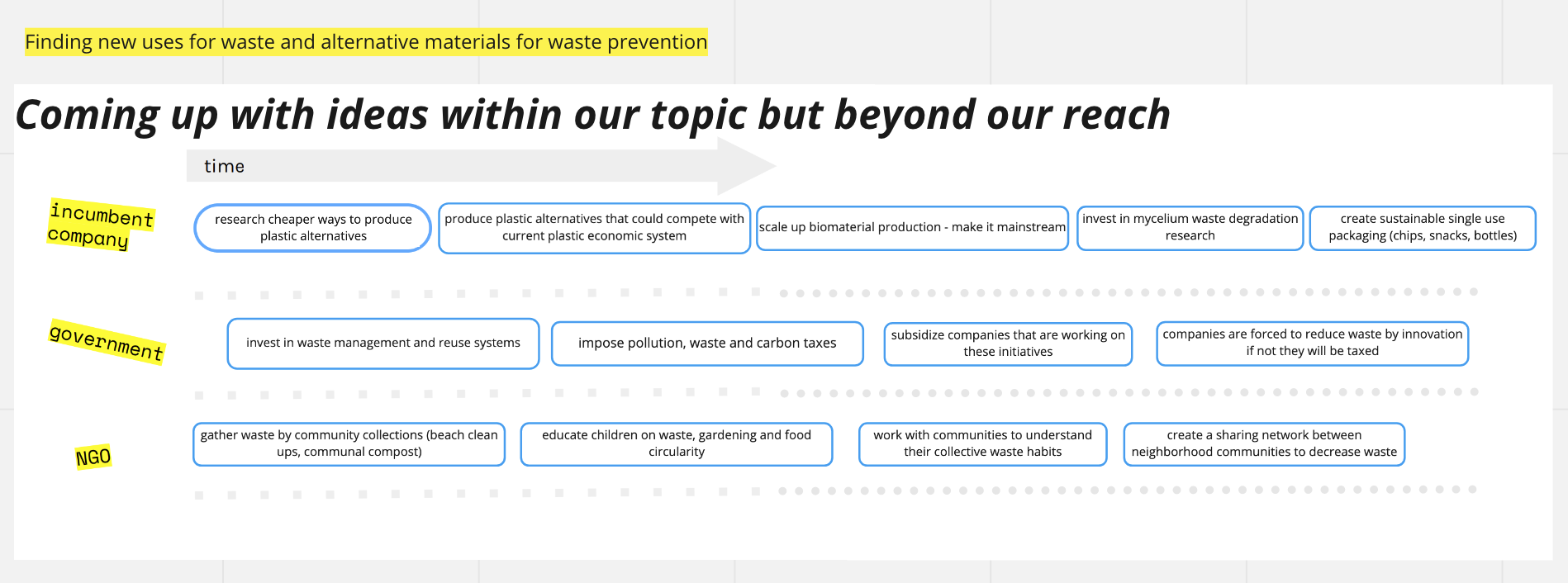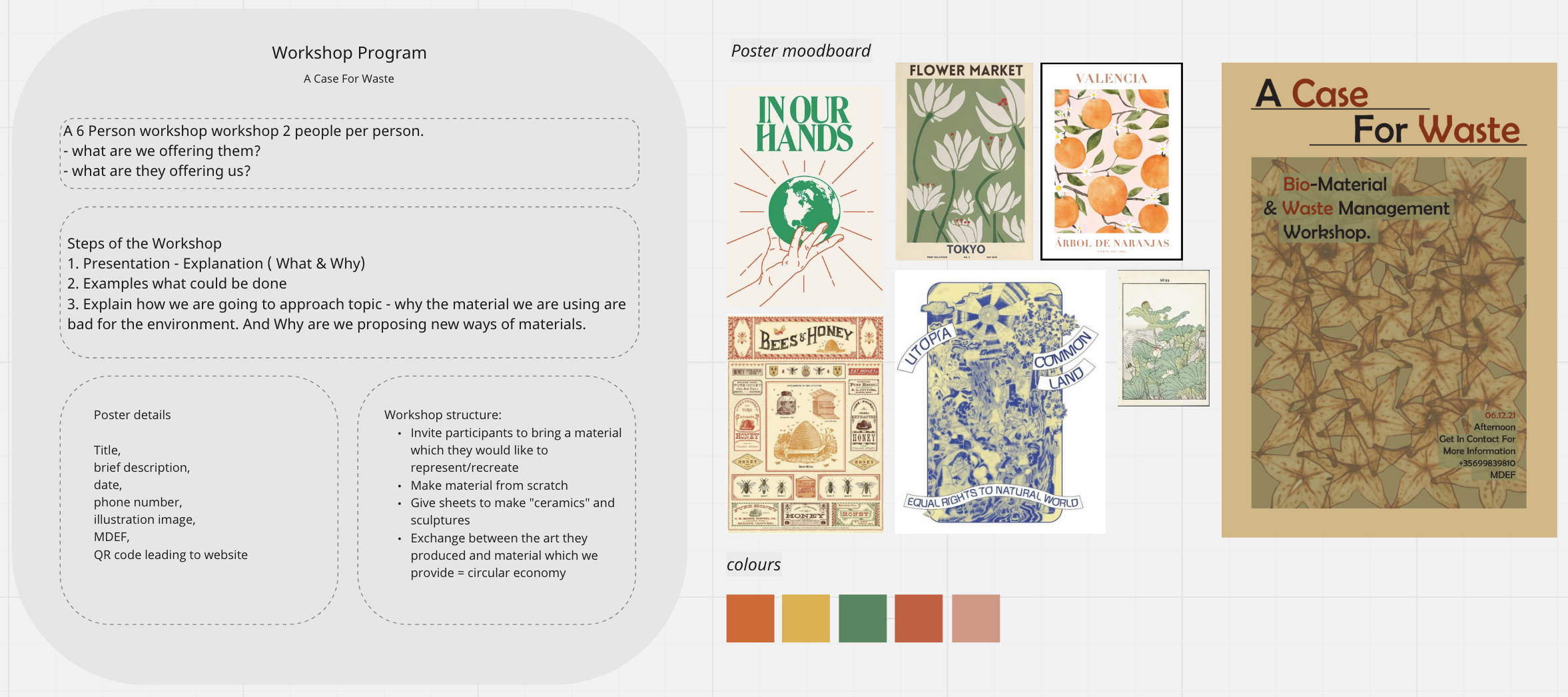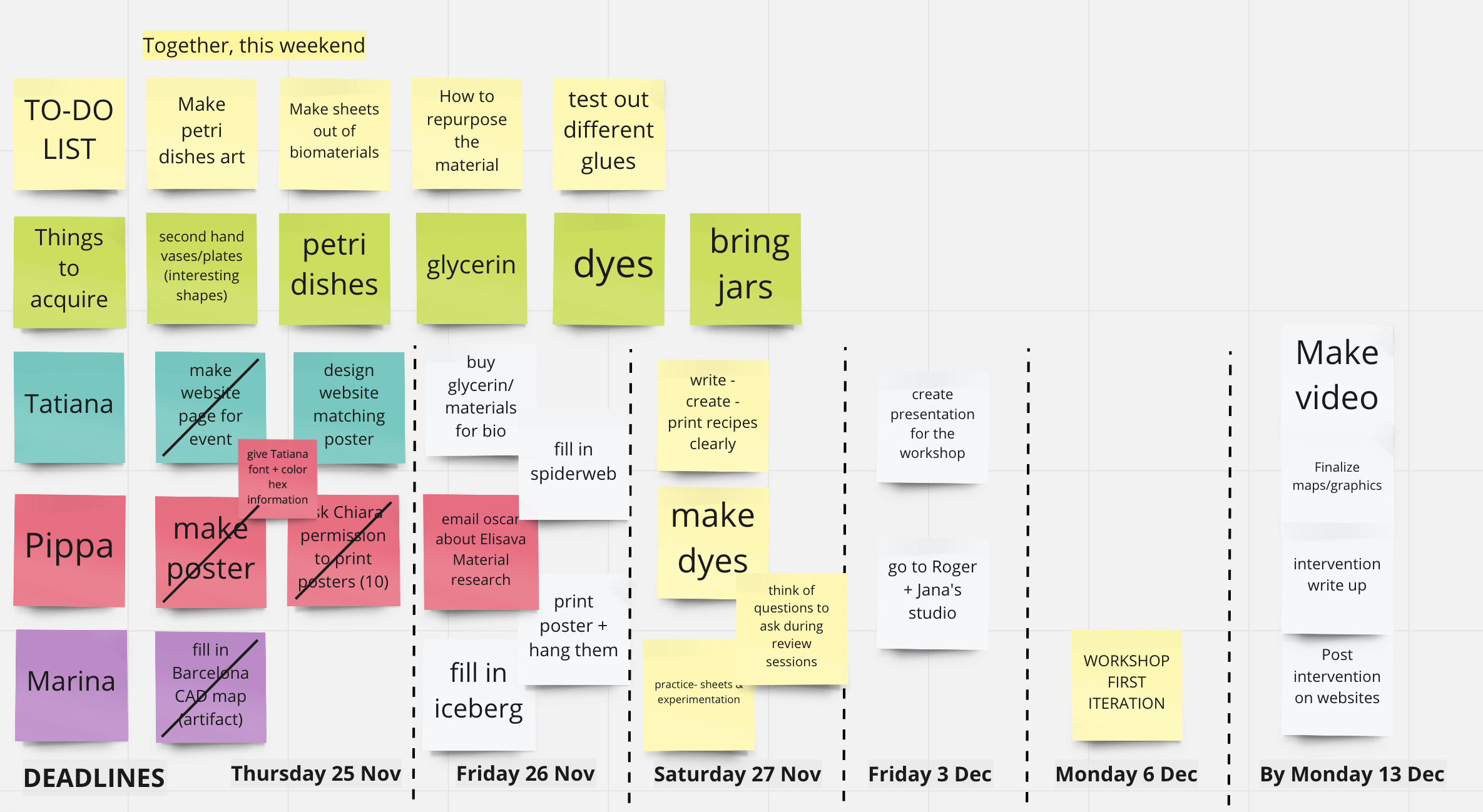Another assignment was to create a 4D representation of our system. We chose to use materials we already had in order to convey the circular transition we would like to achieve. From plastic, to bioplastics, to mixed combinations and finally full biomaterials.

